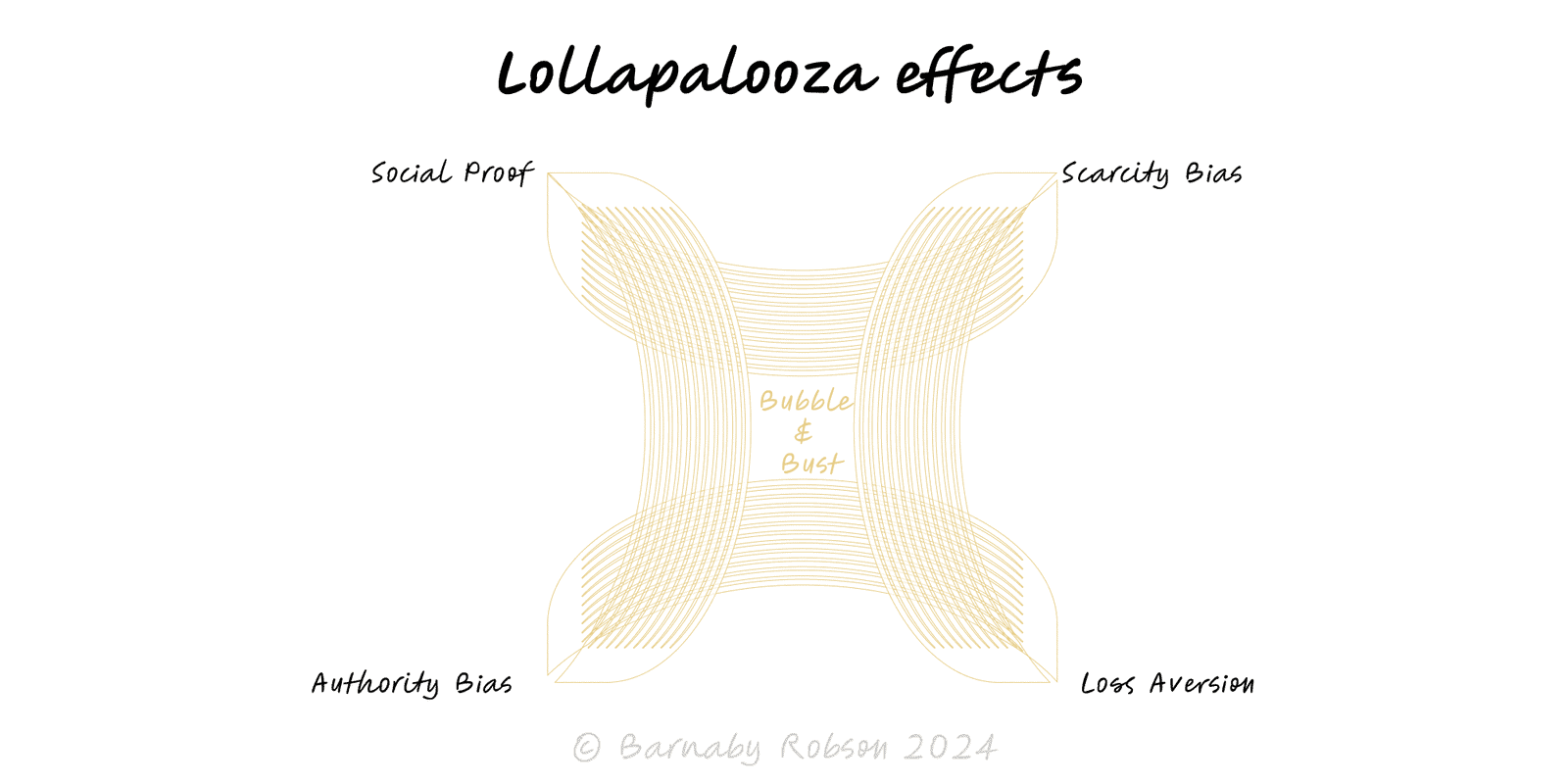Lollapalooza Effects
Charlie Munger

Munger’s Lollapalooza effect explains outsized outcomes: not one cause, but many aligned causes acting together. Stack a few powerful tendencies—incentives, social proof, commitment/consistency, scarcity/urgency, authority, reciprocity, contrast/anchoring—and then add a reinforcing loop. Small nudges become waves: bubbles, frenzies, cult brands… or catastrophic failures.
Stacked biases – multiple psychological tendencies point in the same direction and amplify each other.
Incentive alignment – rewards, status, and career risk all reinforce the same choice.
Social proof & identity – visible adoption + in-group signalling multiplies follow-on adoption.
Scarcity & urgency – deadlines, limited slots, stockouts accelerate commitment.
Anchors & contrast – high anchors and framing make the target option feel irresistible.
Reinforcing loops – each adoption strengthens the next (reviews → more buyers → more reviews).
Thresholds – once a tipping point is crossed, the cascade looks inevitable.
Product launches & growth – orchestrate PR + waitlists + creator endorsements + referral rewards.
Pricing & sales – anchoring (list price), limited-time bonuses, social proof on checkout, strong guarantees.
Culture & change – leadership exemplars + public commitments + easy first wins + recognition loops.
Markets & finance – momentum + stories + cheap leverage → bubbles; reverse stack → panics.
Safety & incidents – misaligned incentives + workload + weak checks → cascade failures.
Define the target behaviour – the specific action you want to multiply (e.g., activate within 1 day).
Map current forces – list incentives, norms, copy, proofs, frictions; note which already align.
Stack 3–5 levers deliberately
Incentive (cash, status, access),
Proof (testimonials, counters, live usage),
Commitment (opt-ins, small reversible steps),
Scarcity/urgency (limited slots, timed cohorts),
Authority/credibility (trusted endorsers, certifications),
Ease (one-click flows, defaults).
Sequence for momentum – order levers so each success feeds the next (e.g., VIP beta → case studies → public launch).
Remove counter-forces – reduce friction, conflicting KPIs, and mixed messages.
Instrument early – track leading indicators: k-factor, conversion at each touch, referral share, queue lengths, error rates.
Install guardrails – caps, cool-offs, review gates, fraud/quality checks; design a “pull the brake” rule.
Run a premortem – list failure cascades; add specific dampers before scaling.
Manipulation & trust erosion – over-stacked persuasion backfires; long-term WTP and reputation drop.
Unstable success – momentum without fundamentals stalls when the stack weakens.
Perverse incentives – teams optimise the metric, not the mission (Goodhart’s law).
Tail risk – the same stack can fuel doom loops on the way down.
Regulatory & ethical limits – scarcity claims, influencer disclosures, and financial promotions have rules.
Diminishing returns – repeated gimmicks lose power; refresh the stack or simplify.
